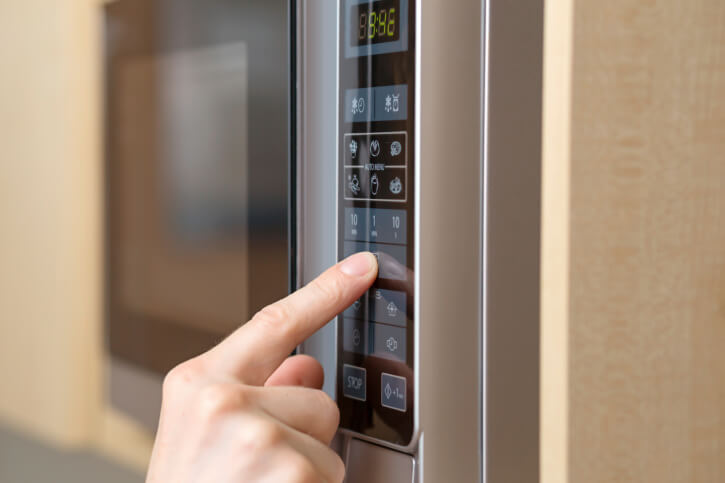
Top 7 Causes of Microwave Failure
OK, you’re right in the middle of watching a spellbinding movie. And you suddenly get a big craving for some hot, buttery popcorn. So you pause the movie, toss a bag of microwave popcorn into your microwave oven, set the time, and hit the start button.
And nothing.
Nothing but the grumbling of your stomach. And disappointment. Because your microwave oven has failed. It’s out of commission. No popcorn for you tonight.
So you go back to your movie and resume watching it. But you know, it’s not quite as entertaining as it was. The second half of this movie would have been lots better with a big bowl of tasty popcorn perched on your lap.
Darn!
Oh well, tomorrow you’ll have to call the repairman. When he investigates your problem, he’s likely to find one of these 7 common causes of microwave failure:
#1: Diode Burn-Out
Microwaves use a diode to convert incoming A/C power to the D/C power that the microwave needs. The diode also has the job of increasing the voltage that powers the heart of the microwave, the magnetron. If the diode fails, the power that’s supplied to the magnetron will be insufficient for proper functioning.
The repairman will be able to test whether the diode is burned-out by checking it with a voltmeter. But sometimes just a visual inspection can confirm that a diode is burned out.
#2: Faulty Door Switch
It could be that there’s nothing wrong with the internal workings of your microwave. Instead, there might be a problem with the door switches. The switches (most microwaves have three) are designed to prevent the microwave from running when the door is not completely closed. It’s a safety feature.
But if a door switch goes bad, it can prevent the microwave from running even when the door appears to be properly closed.
#3: Magnetron Failure
The magnetron tube emits the microwave radiation that cooks your food. When this tube fails, it must be replaced; it cannot be repaired. (Note: Accidentally running your microwave while empty can damage the magnetron.)
#4: Incapacitated Capacitor
Your microwave’s high-voltage capacitor has the job (in conjunction with the diode) of converting and increasing the incoming voltage. If the capacitor burns out, it must be replaced.
CAUTION: Only a professional should attempt this job. Even with the microwave unplugged the capacitor can retain an electrical charge sufficient to injure or even kill.
#5: Terminated Transformer
Another electrical component that commonly fails in microwaves. A burning smell and the sound of arching electricity often accompanies a transformer failure. Not good!
#6: Failed Fuse
Designed to prevent the microwave from overheating, the fuse – or in some ovens, the thermoprotector – can sometimes blow, preventing the oven from running.
#7: Bad Control Board
Most microwaves have a main control board that serves as the ‘brain’ of the appliance. Though rare, circuits within control boards sometimes fail. When this happens any number of problems can result, including an oven that won’t heat up.